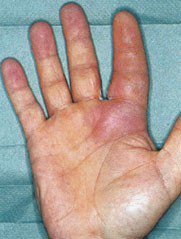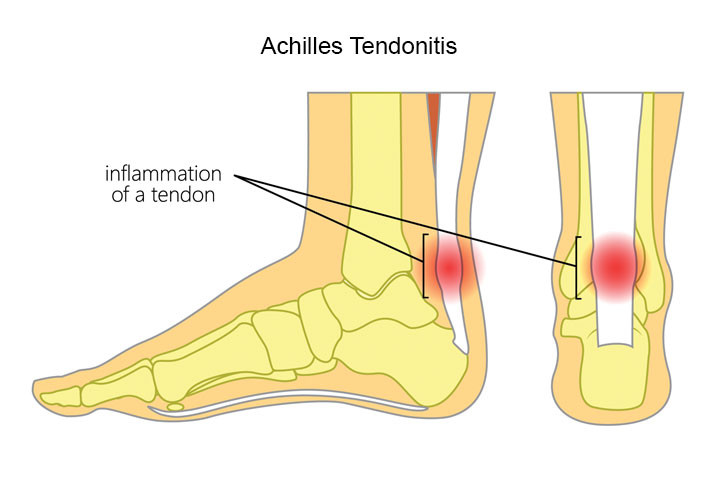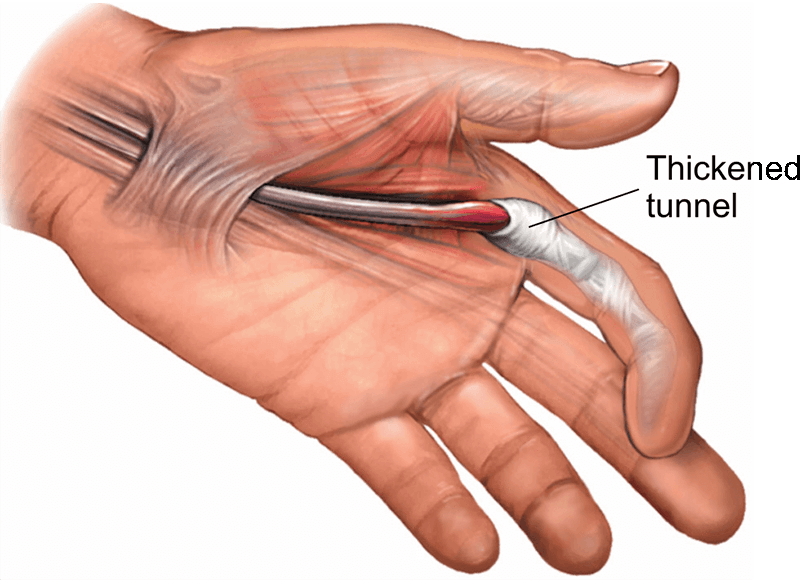Definition
Epicondylitis is defined as a reduced function of the tendon connected to the elbow-region protrusion of the epicondyle bone. This disease occurs due to excessive and continuous use of the tendon. Tendons are connective tissues that attach muscles to bones. This disease can occur when the tendons in the elbow area are constantly worn and not given time to recover and rest.
Epicondylitis is divided into two, namely:
- Medial epicondylitis, or golfer's elbow, is common in golfers. It is a reduced function of the tendon connected to the middle epicondylar bony prominence at the elbow.
- Lateral epicondylitis, or tennis elbow, is common in tennis players. It is a reduced function of the tendon attached to the outer epicondylar bony prominence at the elbow.
Tennis and golf players frequently develop epicondylitis as a result of sports injuries sustained in non-ergonomic postures. The extent of the damage exceeds the rate at which tendons regenerate.
Comparatively speaking, medial epicondylitis is seven to ten times less common than lateral epicondylitis. Medial epicondylitis is estimated to account for about 10% of all epicondylitis cases. Meanwhile, lateral epicondylitis is the most common cause of muscle and joint pain in the elbow area.
We have articles on lateral epicondilits that you can read here: Elbow Tennis (Lateral Economic) - Definition, Cause And Risk Factor.
Causes
Epicondylitis is associated with repetitive motion of the tendons attached to the elbow, causing excessive muscle contraction and tiny tears in the tendons.
Despite being frequently linked to athletes, the illness is also common in the general public. Those who work in occupations where gripping objects with the hands frequently occurs, such as carpenters and meat cutters, are often affected by epicondylitis.
Examples of repetitive motions that can cause epicondylitis are:
Medial epicondylitis
The use of the wrong tools, improper technique, and poor body alignment are the causes of medial epicondylitis.
Athletes that grip objects, flip their arms, or bend their wrists frequently are the most commonly affected, such as:
- Golfers
- Baseball and tennis players
- Javelin throwers
- Climbers
- Archers
- Weightlifters
Lateral epicondylitis
History of previous injury to the elbow related to overexertion.
Lateral epicondylitis is caused by repetitive contractions of the arm muscles, which involve raising and straightening the arm and wrist, such as:
- Using tools related to plumbing installation
- Painting
- Turning screws
- Cutting food items, especially meat
- Repetitive use of a computer mouse
Risk Factor
The biggest risk factor for elbow pain and epicondylitis is engaging in strenuous exercise and repeatedly bending and straightening your elbow for a prolonged period of time. Generally speaking, the physical activity level of the patient is one of the risk factors for epicondylitis.
Here are some additional variables that can increase the risk of epicondylitis:
- Epicondylitis is common in the dominant hand, especially when performing repetitive movements on a daily basis
- Jobs requiring a lot of repetitive arm motions include those in sports, painting, carpentry, plumbing, meat cutting, and cooking
- being in a productive age range of 30–50 years old
- Overweight or obesity
- Smoking habit
- Metabolic diseases such as diabetes
Symptoms
You may have a feeling of pain inside or outside of the elbow when you have epicondylitis.
Epicondylitis pain characteristics include:
- Pain worsens with activity or waking up in the morning
- Pain generally improves with rest
- Pain complaints typically arise during arm grasping, throwing, bending, or turning motions
- The pain may radiate from the elbow to the arm or wrist
- Symptoms of inflammation, such as elbow swelling or redness, may accompany the pain when it first begins. The elbow area may also be painful to touch
Diagnosis
The diagnosis is made through a medical interview, a physical examination, and other supportive examinations, which include:
- A detailed social history regarding occupational risk factors, activities, and hobbies to identify potentially repetitive wrist flexion or forearm pronation (movement of the forearm muscles so that the palm points downwards or backward)
- A physical examination of the wrist, elbow, or any affected areas for pain and tenderness, with a neurology (nerve-related) examination to see if any nerves have been damaged
- Radiographic supportive examinations, such as ultrasound, MRI, electromyography, and nerve conduction tests, to see if other conditions are causing the symptoms
Management
Resting your elbow and arm first is advised if the pain starts suddenly. To help with pain, some over-the-counter painkillers can also be taken; however, do not overdo it to prevent side effects.
Support devices, such as a brace or splint, can help provide compression to the bone. Surgical procedures might be necessary to address nerve impairment in certain cases of epicondylitis.
Additionally, you should refrain from engaging in any activities that aggravate your pain.
Complications
Epicondylitis rarely causes complications, but the most frequent complication that arises is long-lasting elbow pain. The nerves that run through the elbow region may become injured when it affects the nerves.
Prevention
To lessen the discomfort associated with epicondylitis, follow these steps:
- Stopping or reducing activities that cause pain
- Avoid movements that further strain the elbow, arm, or wrist for some time until the complaints improve
- Warm up before exercise and cool down after exercise
- Use ergonomic, lightweight rackets or equipment to prevent further strain on the tendons
When to see a doctor?
Seek medical attention if the elbow pain persists even after resting for a few days and does not go away. Your doctor might order some imaging tests to help diagnose your condition if they feel that the elbow pain is serious enough to require additional investigation.
Looking for more information about other diseases? Click here!
- dr Hanifa Rahma
Tennis elbow. (2020). Retrieved 12, 2022, from https://www.nhs.uk/conditions/tennis-elbow/
Lateral epicondylitis: New trends and challenges in treatment. (2022). Retrieved 12, 2022, from https://www.wjgnet.com/2218-5836/full/v13/i4/354.htm
Tennis elbow. (2020). Retrieved 12, 2022, from https://www.mayoclinic.org/diseases-conditions/tennis-elbow/symptoms-causes/syc-20351987
Medial Epicondylitis. (2020). Retrieved September 12, 2022, from https://www.ncbi.nlm.nih.gov/books/NBK557869/












